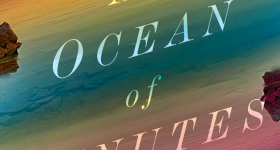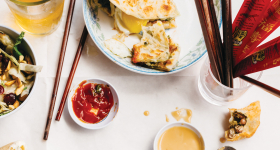A COUPLE of years ago while doing research for her book, The Fortune Cookie Chronicles, intrepid reporter Jennifer 8. Lee of The New York Times found herself with the enviable task of searching for the greatest Chinese restaurant.
Apparently, it didn't exist anywhere in the United States, France, Australia, or Mauritius for that matter. But there are worse things in life than getting stuck with bad Chinese food on a scenic tropical island.
Lee traveled on and off for about a year, starting first in Peru in August 2006 and ending in New Zealand in July 2007. During her journey, she was robbed on four continents-including being pickpocketed and having her cell phone stolen. She pressed on.
Lee narrowed her search by eliminating China as well Hong Kong and Taiwan from her list of possibilities in order to gauge the extent to which Chinese food had been adapted around the globe. Then, she started emailing friends, scouring restaurant reviews and conferring with food critics. She sampled about 50 restaurants before settling on the one that appealed to her most, based not on just the food but the pageantry surrounding it.
In Peru, she stopped by Aeropuerto, which served up a mixture of fried rice and noodles. Lee's assessment: "I didn't dislike it."
In Tokyo, she dined at Wakiya, where the namesake-chef combined Japanese delicacy and Chinese flavors with French presentation. She tasted dan-dan noodles, chili lobster-chicken and mochi rice wrapped in pork.
One of the locations that intrigued her most was Dubai, where the Chinese population is next to nil. Lee's research revealed that many Chinese restaurant owners there brought in Filipino workers to substitute for the lack of Chinese labor. But one restaurant, Zheng He, went so far as to import workers from China to give it an air of authenticity.
In the United States, Lee met with disappointment, despite trying several restaurants in cities with the heaviest concentrations of Chinese, including San Francisco, Los Angeles and her hometown of New York. She attributes part of the reason to a watering-down effect.
Chinese food hit its peak in this country during the 1960s and 1970s, with the introduction of a number of highly-trained chefs. The proliferation of Chinese cuisine made it hard for these chefs to set themselves apart.
"There hasn't been a generation of chefs who have made that kind of cultural splash," Lee says, adding that it is also hard for Chinese-trained chefs to obtain visas since most are reserved for people with four years of college, or for actors and models. Add the emergence of other Asian cuisines such as Thai and Vietnamese, and Chinese food just didn't seem as exotic.
"They were more exciting and innovative," Lee says of the other Asian cuisines, pointing out that even some Chinese business owners opened Japanese restaurants to make more money.
So where exactly is the greatest Chinese restaurant in the world? Lee picked Zen Fine Chinese Cuisine, outside of Vancouver, Canada. In her book, she describes it as a unique dining experience that "serves modern four-star Chinese Cuisine but in the equivalent of a hole-inthe-wall, on the second floor of a strip mall on a dead-end street."
It didn't take long for Zen Fine to jump on the newfound publicity. It now touts itself as "The Greatest Chinese Restaurant Outside of China" on its website. Hopefully, that will help save it from going bankrupt. Turns out the owner, Sam Lau, has been struggling to keep the business afloat. He recently told The Vancouver Sun that customers don't appreciate his creative efforts and instead complain about the menu prices.
"But I have no regrets," Lau said. "I've been doing my very best. I'm quite proud."









Comments